Today, we are going to discuss the best software development companies in San Antonio.
Top Software Development Companies in San Antonio, USA | Leading IT Companies San Antonio
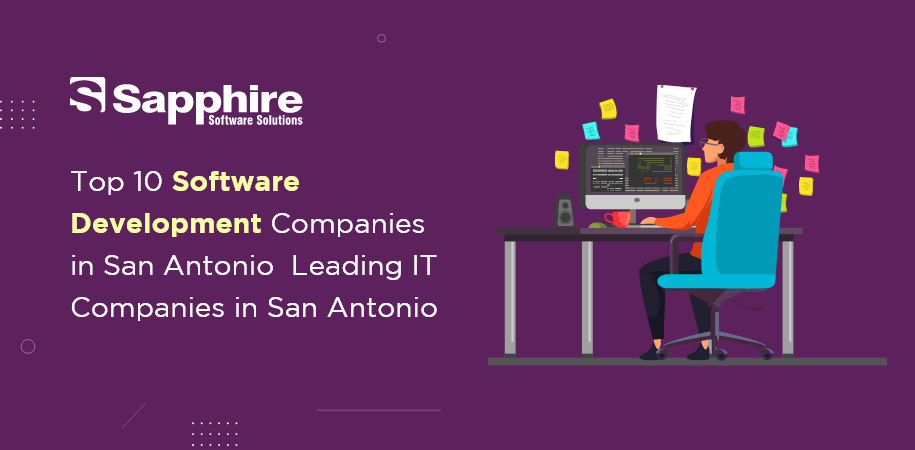

Today, we are going to discuss the best software development companies in San Antonio.
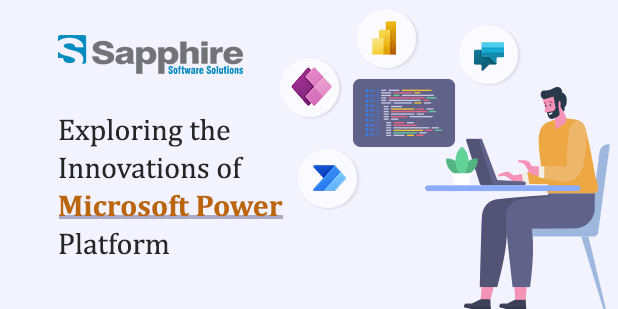
In recent years, Microsoft has aggressively expanded its Power Platform to enable organizations to build bespoke apps, automate processes and analyze data to make better decisions. These capabilities are made available to enterprises through the Microsoft cloud. Power Apps, Power BI, Power Automate, and Power Virtual Agents are the four components that make up the Power Platform. These technologies provide companies with the opportunity to design end-to-end solutions tailored to their specific needs. This blog will look at the new features added to the Microsoft Power Platform.
Users can rapidly build personalized software solutions for their businesses using Microsoft Power Apps, a low-code development platform. It is a component of the Microsoft Power Platform, which includes the business analytics tool Power BI and the workflow automation tool Power Automate.
Power Apps is a tool that helps users build apps with little or no coding required. The platform’s interface is based on a drag-and-drop system and comes with pre-built components that can be modified to suit a particular company’s needs. With the help of Power Apps, it is possible to create a wide range of apps, such as data input, inventory management, customer relationship management, and many more.
Integration with other Microsoft services, such as Office 365, Dynamics 365, and SharePoint, is one of the most important advantages of Power Apps. Thanks to the integration, users can now access data from these providers and use it inside their own apps. Power Apps can also connect to a variety of data sources, including Excel spreadsheets, SQL databases, and SharePoint lists.
Power Apps contains various templates and pre-built components that help speed up software application development. These frameworks and components can be modified to meet a wide variety of needs. Forms, galleries, charts, and maps are just some of the control and capability options available through this platform.
Users can work together on a single application using the Power Apps platform. Users can collaborate and share their work to develop an application. The platform has comprehensive security measures that enable administrators to regulate access to data and apps. It protects sensitive information and ensures that unauthorized parties cannot access it.
Businesses looking to efficiently develop bespoke apps will find Microsoft Power Apps invaluable. Because of its low-code development strategy, connectivity with other Microsoft services, and access to a wide variety of data sources, it is a great solution for organizations of all sizes and different sectors. Checkout, Our Microsoft PowerApps Services in India, USA
The business analytics solution known as Microsoft Power BI enables users to analyze data and share their views. It is a component of the Microsoft Power Platform, which includes the Power Apps development environment for building apps and the Power Automate platform for automating workflows.
Power BI enables users to connect to a variety of data sources, such as Excel spreadsheets and SQL databases, and cloud-based data sources such as Azure SQL Database, Azure Data Lake Storage, and more. These data sources are Excel spreadsheets. Then, users can use the data visualization capabilities available in Power BI to create reports and dashboards that help them analyze and understand their data.
The fact that Power BI is so easy to use is one of its most important advantages. Users can quickly create reports and dashboards due to the drag-and-drop user interface of the platform, which is available to them. It also provides a variety of options for data visualization, such as charts, graphs, maps, and tables, all of which can be adjusted to meet the user’s particular needs.
The extensive data modeling and analysis capabilities included in Power BI allow users to conduct in-depth research on their data. Users can develop their own unique computations and metrics. They can use the natural language query features of Power BI to ask questions about their data written in standard English.
Power BI users can share their dashboards and reports with others inside and outside their organization. Reports can be sent to others, published online, or included in other programs such as SharePoint and Teams. All these options are available. In addition, Power BI is equipped with security capabilities that enable administrators to control who can access which data and reports.
Microsoft Power BI is an effective tool for companies that want to analyze data and gain new insights into their operations. Because of its intuitive interface, powerful data modeling and analysis features, and the ability to collaborate on reports and dashboards, it’s a great choice for companies of any size and in any field of work. Checkout, out our Power BI Consulting Services in India, USA.
Users can set up automated processes between applications and services with the help of Microsoft Power Automate, a workflow automation technology developed by Microsoft. It is a component of the Microsoft Power Platform, which also includes applications for analyzing corporate data and Power Apps for building Power BI.
Using the wide selection of connectors provided by Power Automate, users can connect to many apps and services inside and outside the Microsoft environment. These connections include many well-known services including Salesforce, Dropbox, Twitter, and more.
Users can build automated workflows that help streamline company operations using the drag-and-drop interface provided by Power Automate. Sending emails, creating new entries in a database, and publishing content to social media are all examples of workflow activities that can be included.
Users can quickly develop processes due to the wide variety of templates available with Power Automate. These templates can be modified to meet the special needs of a specific organization. In addition, Power Automate comes with various predefined actions and conditions that can be applied to workflows to make them more sophisticated.
Users can work together on processes and share results with others using Power Automate. Customers can also manage and analyze their workflows using Power Automate’s analytics tools, which provide insight into the performance and usage of processes.
Power Automate has robust security features that enable administrators to manage users’ access to processes and protect critical data. These measures also guarantee that data is kept secure. Users can build end-to-end solutions that include a variety of apps and services as it interfaces with other Microsoft services such as Power Apps and Power BI.
Businesses trying to automate their workflows and simplify procedures might benefit greatly from using Microsoft Power Automate, a robust technology. Workflows may be created quickly and simply with this software because of its extensive library of connections, templates, and built-in actions. Moreover, the software’s analytics and security capabilities provide insights and protection. Check out Our Power Automation Services in India, USA.
Microsoft Power Virtual Agents is a chatbot platform that provides users with the ability to develop and deploy state-of-the-art chatbots in a rapid and efficient manner. It is a component of the Microsoft Power Platform, which also includes Power Apps for building apps, Power BI for enterprise analytics, and Power Automate for process automation. This feature is a component of the Microsoft Power Platform.
The no-code or low-code interface that Power Virtual Agents provides to its users makes it possible for them to build chatbots with the help of pre-built templates and components. A drag-and-drop user interface is provided with the platform, and it allows users to develop chatbots on the platform using pre-built templates, components, and different types of connections. The interface is provided with the platform.
With the help of Power Virtual Agents and its natural language processing (NLP) capabilities, users are able to instruct their chatbots to understand their intentions and respond appropriately to user inquiries. The platform also includes several artificial intelligence (AI) and machine learning (ML) elements, giving chatbots the ability to enhance the quality of their responses to consumer inquiries and learn over time from their interactions with customers.
A wide variety of connectors are available both between Power Virtual Agents and other Microsoft services, such as Power Automate and Power Apps and to interface with third-party services, such as Salesforce and Zendesk. Connectors between Power Virtual Agents and other Microsoft services can be found here. Users now have the ability to connect their chatbots to a huge number of data sources and automate a variety of operations thanks to this connection.
Customers are given the ability to monitor and measure the performance of their chatbots using the many analytics tools included in Power Virtual Agents. These tools provide information about user interaction, discussion path, and so on. The platform also has a comprehensive set of security features that allow administrators to control users’ access to chatbots and keep sensitive data secure. Both the desktop and mobile versions of the app are equipped with these features and capabilities.
Microsoft Power Virtual Agents is an assistive technology that can be used by companies that aim to rapidly design and deploy personalized chatbots. These businesses can do this by using the product. Its natural language processing capabilities, artificial intelligence and machine learning technologies, and interfaces that require little or no coding make it easy to build chatbots that understand user intent and are able to respond to inquiries. Its analytics and security features, in addition to its connections to other Microsoft services and third-party services, make it an essential weapon on the list of any business that wishes to improve customer service and automate processes.
The developments made to the Microsoft Power Platform will continue to enhance the user experience and make it easier for businesses to design their own applications, automate their processes, and analyze their data. These improvements are scheduled to take place. Thanks to the newly added features and capabilities, our team can develop Microsoft PowerApps Services that cater to your individual needs and enable them to pick based on data. The Power Platform is an invaluable resource that can be used by businesses of any size and working in any industry. The relevance of this topic will only continue to rise due to the progress made.
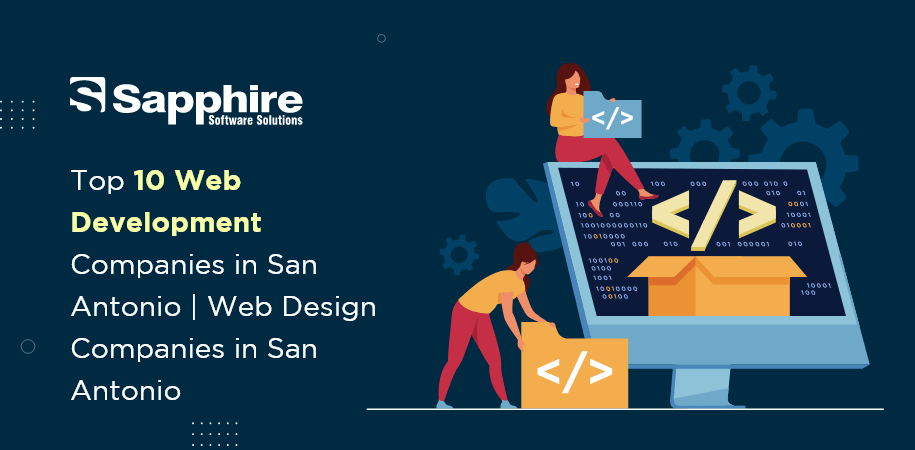
Today, we are going to discuss the best web development companies in San Antonio.

When it was first introduced, front-end development saw significant evolution. It used to be that all you had to do was create static web pages using HTML and CSS. In the past, it was simply about making web pages using those two languages. Still, today it’s grown into a complicated discipline that demands a comprehensive grasp of various technologies and tools. In the next blog article, we will discuss the fundamentals of front-end development.
Let’s start with a review of the fundamentals of front-end development in 2023 before we get into the details of the field. At its most fundamental level, front-end development entails producing the graphical components of a website or application used for user interaction. This covers the page’s structure, typography, color schemes, and user interface components like buttons, forms, and menus to navigate the site.
Each website or application needs HTML to function correctly. In the year 2023, the most recent version of the HTML standard is HTML5, which is used extensively across the web. It is used to arrange the text on a page, which may include headers, paragraphs, lists, and pictures, among other elements.
The presentational aspects of a website or application may be styled with the help of CSS. It allows developers to manage the website’s layout, font, and color palette. In 2023, the most recent version of the CSS standard is CSS3, which is used extensively across the web.
Interactivity may be added to web pages and apps using a programming language called JavaScript. In 2023, the language with the largest market share for front-end development is JavaScript. It offers developers the ability to build responsive designs and user interfaces that are dynamic.
Frameworks and libraries are assemblages of code that have already been developed, and developers may utilize them to make the development process more efficient. They provide tools and rules that simplify the development of complicated software applications. React, Angular, Vue.js, and jQuery will continue to be four of the most popular front-end frameworks and libraries in 2023.
The concept of responsive design is becoming more critical in contemporary front-end development. It entails the creation of designs that are flexible enough to adapt to various screen sizes and devices. In 2023, a responsive design will be a necessary component of any cutting-edge website or application. This is significant because consumers may now access the internet via a diverse array of devices, including desktop computers, cell phones, and tablets.
Accessibility is an additional crucial component of front-end development. Specifically, it refers to the process of making websites and programs accessible to individuals with various kinds of impairments. This involves the creation of designs that can be accessed using a keyboard, providing alternate text for pictures, and verifying that the color scheme is accessible to people who are colorblind. Accessibility is a fundamental standard that must be met by all contemporary websites and software applications by the year 2023.
In 2023, performance is one of the most important aspects of any contemporary website or application. The front-end development process must place a significant emphasis on performance. Websites and apps must load in a reasonable amount of time for users to have a positive experience. This includes making the code as efficient as possible, compressing the pictures, and reducing HTTP requests.
The workflow of front-end developers may be made more efficient, and their overall productivity can be increased with the help of various tools and technologies. In the year 2023, the following are some of the most widely used technologies and tools:
Code Editors:
Editors of source code are crucial to the front-end development process. In the year 2023, Visual Studio Code, Sublime Text, and Atom are likely to be among the most frequently used code editors. They offer an environment in which code may be written and edited.
Version Control Systems:
To monitor the evolution of code over time, version control systems are used. Developers can work together on projects and manage various code versions using these tools. In 2023, the version control system with the most widespread use is Git.
Package Managers:
Package managers are tools that are used to manage the many dependencies that are associated with a project. They make it simple for developers to install and update libraries and frameworks. npm, Yarn, and Bower are three package managers that have gained the greatest popularity in 2023.
Build Tools:
Developing, testing, and deploying code may all be automated with the help of various build tools. Webpack, Gulp, and Grunt are the most well-known and widely used build technologies in 2023. They may assist developers in reducing the time they spend on tasks and ensuring consistency across various situations.
CSS Preprocessors:
The functionality of CSS may be extended with the help of preprocessors for CSS. Sass, Less, and Stylus will remain three of the most widely used CSS preprocessors in 2023. They make it possible for developers to build CSS code that makes use of variables, functions, and mixins. Because of this, CSS code may be maintained and reused more easily.
JavaScript Transpilers:
JavaScript transpilers are tools that translate contemporary JavaScript code into a format that older browsers can read. They allow developers to take advantage of the most current language capabilities while providing compatibility for various hardware. Babel and TypeScript will be among the most widely used JavaScript transpilers in 2023.
Testing Tools:
Testing tools are used to guarantee the high quality and dependability of the code. They make it possible for developers to find and fix flaws and mistakes before the product is released to customers. Jest, Mocha, and Cypress will likely continue to be three of the most widely used front-end development testing tools in 2023.
User Experience (UX):
Developing and enhancing the usability and accessibility of websites and apps are known as user experience (UX). Front-end developers must comprehend UX concepts and be able to produce user-friendly, easy-to-navigate designs by 2023.
Performance Optimization:
Front-end developers in 2023 must be adept in methods such as lazy loading and code splitting and speed optimization techniques such as minification, compression, and image optimization.
Progressive Web Apps (PWAs):
To produce engaging web apps in 2023, front-end developers must be conversant with the most current PWA development strategies. Progressive web apps are online applications that, like native apps, may be loaded on a user’s device. Even when users are not connected to the internet, they may enjoy an immersive and responsive experience.
Static Site Generators:
Static site generators transform dynamic websites into static HTML pages that may be provided to visitors more rapidly. Because of their simplicity and quickness, they are becoming more popular. Front-end developers in 2023 must be conversant with popular static site generators such as Jekyll and Hugo.
Web Assembly:
Web Assembly is a low-level binary format for running programs in browsers at near-native rates. Front-end developers must know Web Assembly and how to use it to construct high-performance online apps by 2023.
The following are some of the soft skills required for success in this field:
1. Communication Skills: To comprehend project needs and outputs, front-end engineers must communicate effectively with customers, designers, and developers. They must be able to communicate technical knowledge clearly and concisely.
2. Teamwork: Front-end development is a collaborative endeavor. Developers must collaborate with other team members to construct and execute projects on time and under budget.
3. Time Management Capabilities: Front-end developers must adequately manage their time to fulfill project deadlines. To accomplish assignments on schedule, they must be able to prioritize duties and work effectively.
4. Ability to Solve Problems: Front-end development is a problem-solving discipline. Developers must be able to examine issues, disassemble them into smaller parts, and devise effective solutions.
5. Creativity: Front-end developers must be imaginative to create aesthetically attractive and engaging websites and apps. They must be able to think outside the box and devise novel solutions to design problems.
6. Adaptability: Front-end development is an ever-changing discipline. Developers must be ready to adapt when new technologies, frameworks, and tools arise.
7. Attention to Detail: Front-end developers must pay close attention to detail to produce high-quality work. They must be capable of detecting faults and flaws before they become an issue.
8. Empathy: Front-end developers must be compassionate toward end users. They must be able to put themselves in the user’s shoes and build intuitive and straightforward interfaces.
In 2023, soft skills will be equally vital to front-end engineers’ technical abilities. To thrive in this area, developers must have good communication, cooperation, time management, problem-solving, creativity, flexibility, attention to detail, and empathy. By honing these talents, front-end developers may create engaging and responsive websites and apps that provide a great user experience.
Front-end development has evolved into a sophisticated subject that needs a thorough mastery of several tools and technologies. Front-end developers in 2023 must be fluent in HTML, CSS, JavaScript, and popular frameworks and libraries like React and Angular. At Sapphire, developers know responsive design, accessibility, and performance optimization. Also, they know the most recent tools and technologies, such as code editors, version control systems, and package managers. avail our front-end development services to design engaging and responsive websites and apps that give a great user experience by learning these abilities and keeping up to speed with the latest trends and advances in front-end development.
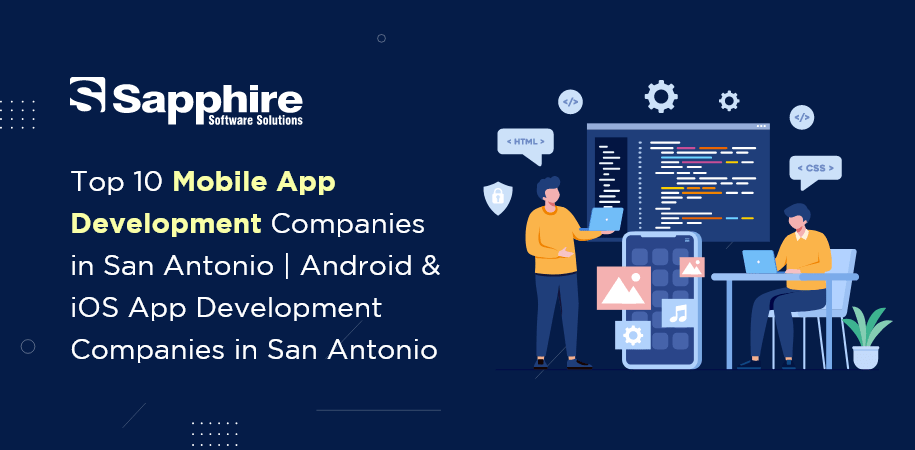
Today, we are going to discuss the top mobile app development companies in San Antonio, Texas.
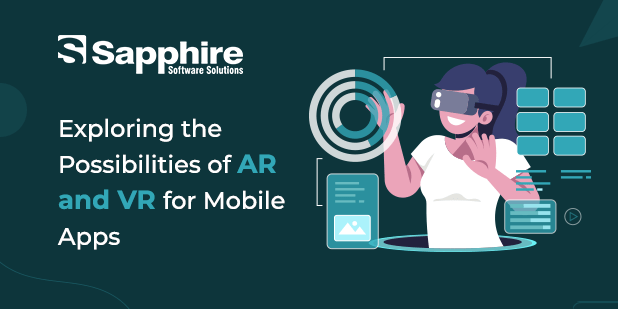
Augmented Reality (AR) and Virtual Reality (VR) are two technologies that have attracted much interest in recent years. Even though these technologies have been there for some time, the implementation of these technologies in mobile applications has created new opportunities for both consumers and enterprises. The use cases for augmented and virtual reality technologies are almost limitless, and the former has the potential to revolutionize how we interact with our mobile devices. In this piece, we will investigate the potential of augmented and virtual reality for mobile applications.
Although they have specific points in common, augmented and virtual reality are unique technologies. Augmented reality (AR) superimposes digital information onto the physical environment, augmenting both what we see and hear. The difference between augmented reality (AR) and virtual reality (VR) is that AR includes adding digital material to the real world around us. At the same time, VR entirely immerses us in a virtual environment. Virtual reality, on the other hand, obscures one’s view of the outside world and substitutes it with an entirely simulated setting.
Augmented and virtual reality need specialized technology and software to be created. AR typically needs a device equipped with a camera, such as a smartphone or a tablet, to record the actual world. At the same time, virtual reality often requires a gear that filters out the natural world and presents a virtual environment.
The creation of virtual reality (VR) and augmented reality (AR) applications will, without a shadow of a doubt, significantly impact the digital world’s future. You should be informed of current and forthcoming market trends even if the popularity of AR and VR has only just begun to increase.
The concept of driverless cars is becoming more common in today’s society. Several individuals have shown interest in self-driving vehicles and are eager to go behind the wheel of one. Companies are already implementing new voice assistant technology, such as driver-accessible augmented reality in automobiles, as they don’t want to disappoint customers. Incorporating augmented reality technology into the design process for brand-new automobile models is the first step.
The outward presentation of a virtual picture and a user’s total virtual experience in the not-too-distant future is slated to undergo significant transformation. Everything on your mobile devices will run more swiftly owing to the exceptionally fast mobile network, including the transmission of data to and from the cloud. The ongoing progress in 5G mobile app speeds will also enhance user experiences for augmented and virtual reality (AR and VR).
Even though there are a ton of fantastic AR and VR opportunities accessible on mobile devices, Web AR also enables you to make use of these characteristics on your PC. No matter your web browser, you may utilize augmented reality with your search engine if it supports the feature. The user experience will be different in many different areas due to this change since so many items are available on the internet that can be accessed with just the click of a button.
Providing consumers with a more dynamic and engaging experience is one way that augmented reality (AR) may improve the user experience of mobile applications. For instance, augmented reality may be used in an app for online shopping to let consumers “try on” virtual clothes before making a purchase. Users would get a more accurate representation of how the apparel will appear on them, boosting their confidence in purchasing.
Moreover, augmented reality may make navigating mobile applications more accessible. For instance, an augmented travel app may use reality to offer users directions and information about various sites of interest while they wander around a new city. Due to this feature, users may find it less challenging to traverse their environments and locate the information they want.
AR can also be used for commercial purposes like marketing and advertising. For instance, augmented reality could be used in a retail app to create interactive product displays. These displays enable users to view and interact with products in a simulated setting. This has the potential to boost user engagement as well as contribute to increased revenue.
Training and education are two other potential applications for augmented reality. For instance, a language-learning app may employ augmented reality (AR) to superimpose digital labels on real-world items, making the experience of acquiring new vocabulary for app users more immersive. This has the potential to make learning more exciting and productive.
AR may also be utilized to provide a gamification aspect to mobile applications. For instance, augmented reality may be used by a fitness program to provide digital prizes for users to gather as they progress toward their fitness objectives. This has the potential to make the app more enjoyable to use and encourage users to maintain their exercise routine.
Immersive entertainment stands out as one of the most apparent applications that virtual reality might have for mobile apps. Virtual reality (VR) can whisk users away to an entirely fabricated setting, where they may engage in activities that would be physically impossible in the actual world. For instance, a mobile app may provide users with a virtual museum or art gallery tour, enabling them to study the exhibits more in-depth. This would be possible since the software would be portable.
VR may also be utilized to boost learning through mobile applications. For instance, a virtual reality (VR)-based history app may take users on a more realistic journey through time, allowing them to experience historical happenings. Due to this, users may find it easier to comprehend and recall historical occurrences.
VR may also be utilized for simulation and training purposes. For example, a medical app could use VR to simulate surgical procedures, allowing medical students to practice in a more realistic environment. This has the potential to improve the standard of medical education and training.
Product visualization is another area where virtual reality (VR) can be helpful. For instance, a home design app may employ virtual reality (VR) to generate 3D models of houses and furnishings. This would enable consumers to see what the finished result will look like before purchasing the item. This may assist in lowering the total number of returns while raising the level of consumer happiness.
VR may also be utilized for treatment and mental health objectives. For example, a meditation app may employ VR to transfer users to a serene atmosphere, enabling them to escape everyday life’s rigors. Exposure therapy is another potential use for virtual reality (VR), enabling users to face their phobias in a secure and managed to set. Checkout, Our Virtual Reality Development Services in India, USA.
Although AR and VR offer tremendous promise for mobile applications, specific problems must be solved.
Augmented and virtual reality demand robust hardware and software, which might be challenging to achieve on mobile devices. This can cause the performance to be sluggish, the power consumption to be excessive, and the functionality to be restricted.
Since augmented reality (AR) and virtual reality (VR) are still relatively new technologies, many people may be unfamiliar with how to utilize them. This may result in the user having a negative experience, leading to frustration and a loss of interest.
Developing and implementing augmented and virtual reality software may be financially challenging for smaller enterprises and startups.
Since they need to collect and process vast volumes of user data, augmented and virtual reality might give rise to privacy and security problems. Businesses that are required to comply with data privacy standards can find this to be a difficult obstacle.
Both augmented and virtual reality offer much promise for mobile applications, and organizations must consider integrating these technologies into their plans to develop mobile apps. AR can increase the user experience, improve navigation, and be utilized for marketing and education. At the same time, VR may offer immersive entertainment, boost learning, and be used for simulation and treatment. Although there are hurdles connected with these technologies, firms that can overcome them may gain from higher user engagement, enhanced customer satisfaction, and more income.
Both consumers and companies rely on Augmented Reality App Development Companies like Sapphire because we can provide unique advantages and improve the overall shopping experience for customers on various fronts. Our Augmented Reality App Development Services are quite reasonable and reliable.
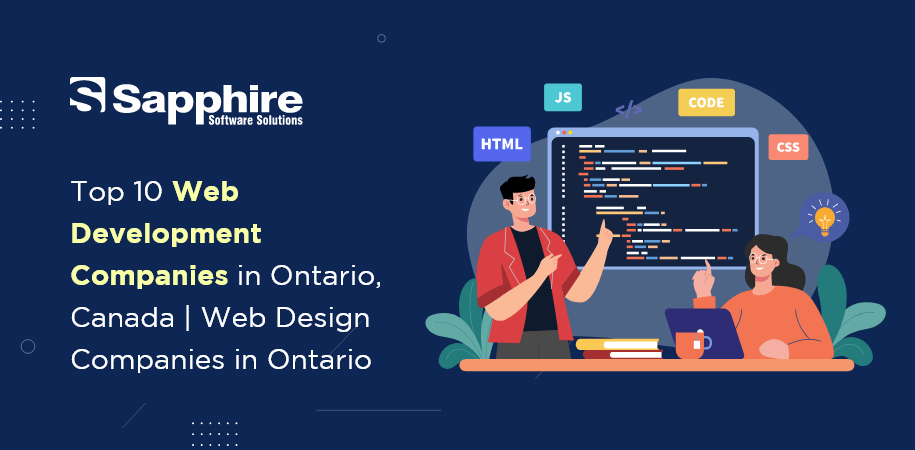
Today, we are going to discuss the best Web Development Companies in Ontario, Canada.
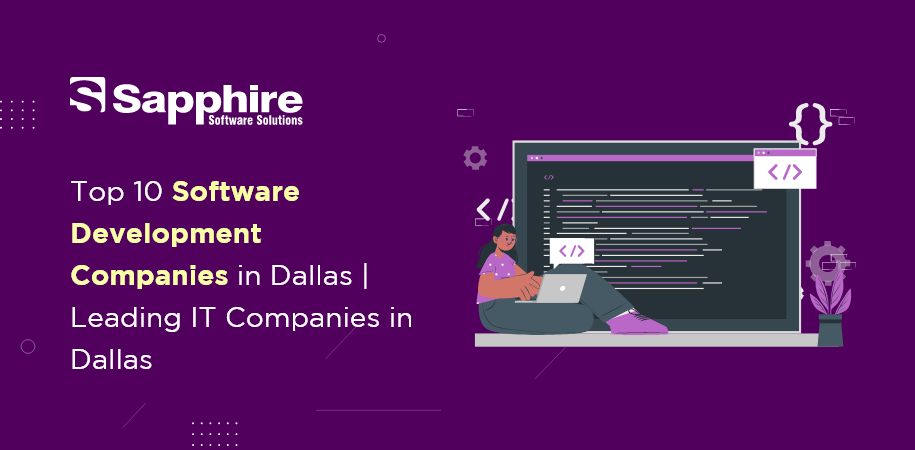
Today, we are going to discuss the best software development companies in Dallas.
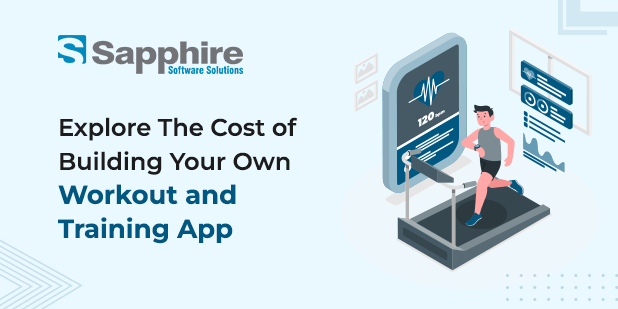
The fitness sector is thriving, and technology is playing an important role. Exercise and training applications have grown in popularity in recent years, particularly following the outbreak of the COVID-19 epidemic. These applications provide tailored training routines, diet planning, and progress monitoring features to users. With the increasing demand for fitness applications, many entrepreneurs and fitness aficionados are considering developing their own exercise and training apps. But, before going on this adventure, it is critical to understand the cost of developing such an app.
The cost of developing a fitness and training app may vary based on several variables, including:
The cost of developing a fitness and training app is mainly determined by the features and functionality you want to incorporate. The more complicated the features, the more time and resources are required to create them, and the higher the development cost. Workout monitoring and exercise instructions are less expensive than sophisticated features like individualized training programs and diet tracking.
For example, including a feature enabling users to design and share their fitness routines would need significant development time and money. You’ll need to design a user interface for generating and modifying workouts, integrate it with the app’s current capabilities, and verify that it works across several devices. Hire the best mobile app development company to build your own workout and training app.
Similarly, including a feature that delivers tailored training regimens may need substantial development time and money. You’ll need to develop a complex algorithm capable of analyzing user data and preferences, generating individualized training programs, and adjusting them depending on user input.
The platform on which you construct your app will also influence the development cost. Since iOS development involves particular expertise and resources, developing an app for iOS may cost more than developing one for Android.
Similarly, developing a cross-platform program that works on iOS and Android would need more development time and resources than developing a single-platform app. Cross-platform development necessitates using specialist tools and frameworks and extra testing and debugging to guarantee that the program functions flawlessly across several platforms. To build the workout app, you need the best workout app development services.
The cost of development may also be influenced by the app’s design. A well-designed, aesthetically attractive, and user-friendly software will cost more than a plain one.
You may need to invest in user experience design (UX) and user interface design to produce a well-designed app (UI). Creating wireframes, mockups, and prototypes to test and enhance the app’s design and doing user testing to verify that the design is intuitive and user-friendly may be part of this process.
Hiring a development team to construct your app might be expensive, depending on their degree of experience and competence. A team of seasoned developers with specific talents will cost more than a team of inexperienced younger developers.
You may need to recruit additional specialists, such as designers, quality assurance (QA) testers, project managers, and the programming team. The fee for these experts will be determined by their degree of experience and skill and the project’s scope.
After the app is out, you must spend on maintenance and support to guarantee that it functions properly and without bugs. This might include delivering frequent updates, bug patches, and technical help to users with problems with the app.
The cost of maintenance and support will vary according to the app’s size and complexity and the amount of help you want to give. For example, offering technical help around the clock will be more expensive than giving support exclusively during business hours.
Lastly, you must spend on marketing and advertising to attract users to your app. Paid advertising, social media marketing, and content development are examples.
Marketing and promotion costs might vary based on the technique used. Paid advertising, for example, may be costly, but social media marketing and content production are less expensive but take more time and effort.
Developing exercise and training software may be a significant investment, and it’s critical to understand the expenses associated before beginning the development process.
We’ll review the costs of creating an exercise and training software, covering the many components contributing to the final cost.
There will be an early planning and research phase before development can commence. The app’s idea is fleshed out at this stage, which includes defining the target audience, detailing the features and functionality, and specifying the app’s objectives. You can also hire mobile app developers to build workout and training apps.
The cost of this stage might vary, but its relevance in the development process should not be underestimated. Without sufficient planning and research, the app may fail to satisfy its target audience’s objectives and goals, leading to a waste of money and effort.
Cost: $1,000 – $10,000
After determining the app’s idea, the following step is to design the user experience (UX) and user interface (UI). This process is part of creating wireframes, mockups, and prototypes to test and enhance the app’s design, as well as doing user testing to verify that the design is intuitive and user-friendly.
The app’s complexity will determine the UX and UI design cost and the detail needed. Basic designs will be less expensive, but more complicated designs with several displays, animations, and interactions will be more expensive.
Cost: $5,000 – $50,000
The software comes to life throughout the development stage. This stage involves developing, testing, and debugging the features and functioning of the app. The development cost will be determined by the platform (iOS, Android, or both) and the program’s complexity.
Basic applications with minimal features will be less expensive, but more complicated apps with advanced features, such as tailored training regimens, would need more development time and resources.
The size and location of the development team will also determine the development cost. Employing a development team in the United States or Western Europe will be more expensive than hiring a team in Eastern Europe or Asia.
Cost: $50,000 – $200,000
The app will need backend development and front-end programming to manage user data, maintain exercise programs, and perform other app-related duties. Backend development is creating the server-side infrastructure, APIs, and databases needed to support the app’s functionality.
The app’s complexity and the backend technology determine the cost of backend development. Basic applications may have basic backend infrastructure, but more complicated apps may necessitate unique backend solutions or connections with third-party APIs.
Cost: $10,000 – $50,000
Before the software can be released, it must be thoroughly tested to verify that it is free of problems and flaws. The app is evaluated for functionality, usability, and performance during this stage. Any defects or difficulties detected during testing must be resolved before the program may be released.
The cost of QA and testing will be determined by the app’s complexity and the number of devices and operating systems it supports. The more devices and operating systems must be examined; the longer and more resources will be required to finish the testing step.
Cost: $5,000 – $20,000
The app is ready to be deployed after it has been designed and tested. This step entails submitting the software to app stores (such as the Apple App Store and Google Play Store) and promoting it through different channels, such as social media, paid advertising, and content marketing.
The marketing approach used will determine the cost of developing and promoting the app. Paid advertising may be pricey, but it can also be helpful in swiftly reaching a larger audience. While content marketing and social media are less costly, they may take more time and effort to see benefits.
Cost: $5,000 – $50,000
Once released, the app will need continuous maintenance and upgrades to stay functional and current with the most recent operating systems and device changes. Bug patches, security upgrades, and new feature releases are examples of maintenance and updates.
The complexity of the app and the frequency of updates will determine the cost of maintenance and updates. Basic applications may need infrequent updates, but more complicated apps may have regular updates to meet customer expectations.
Cost: $10,000 – $50,000 per year
Also, check out Top 10 On Demand Fitness Apps of 2023 That Every Fitness Lover Should Try!
Further expenses associated with developing an exercise and training app may include the following:
Hosting and server expenses include hosting the app’s backend infrastructure and data management.
Third-party integrations: There may be extra expenses if the app needs integration with third-party services such as payment gateways or social networking platforms.
Legal and regulatory compliance: Depending on the app’s features and functionality, legal and regulatory standards, such as GDPR compliance or HIPAA compliance for health and fitness applications, may need to be addressed.
The app’s demand and complexity will determine these extra costs.
Cost: Varies
Apart from the elements described above, the following may also influence the cost of developing an exercise and training app:
Integration of third-party services like payment gateways, social networking platforms, or analytics tools might raise development costs.
Marketing and promotion costs might vary based on the technique used. You will need to spend marketing and advertising after the app is out to attract users. Paid advertising, social media marketing, and content development are examples.
The development cost might increase if you wish to keep user data and content on your servers. You must spend in servers, hosting, and other infrastructure to guarantee that the app functions well.
Legal compliance, such as data privacy legislation and terms of service, is also required while developing an app. You may need to contact a lawyer or legal adviser to guarantee that your app conforms with all necessary rules and regulations.
Developing exercise and training software might be expensive, but it can also be a profitable economic opportunity. The cost of developing an app is determined by various aspects, including the features you wish to add, the platform you choose, the app’s design, the development team you engage, and the cost of maintenance and support. You may create profitable exercise and training software that fits the demands of fitness fans all around the globe by carefully examining these variables and spending appropriately.
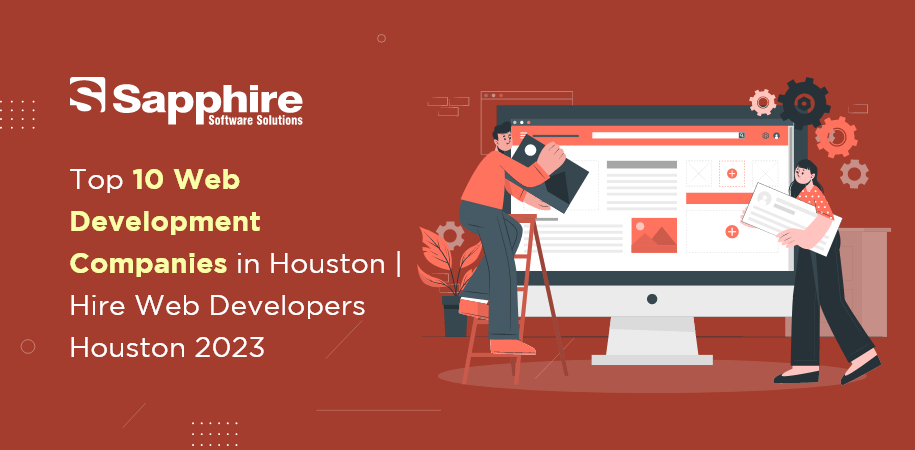
In this blog, we are going to share the list of some best web development companies in Houston. Read this blog to know the top 10 web development companies in Houston.
